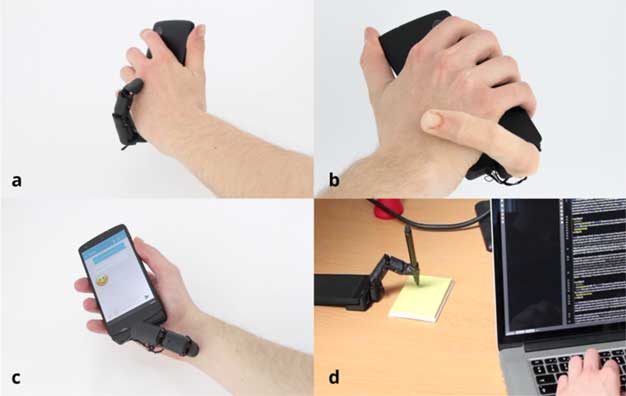MobiLimb Is A Crazy Creepy Crawly Robotic Finger For Your Smartphone
Researchers have created a new device for smartphones called MobiLimb; it's a robotic appendage that is used to augment the mobile device. MobiLimb connects to the charge port on the bottom of a smartphone and adds a small finger-like limb with 5-degrees-of-freedom. The team behind MobiLimb believes it can overcome some of the static, passive, and motionless limitations of mobile devices. The robotic limb preserves the device form factor in how it attaches and the I/O capabilities of the device.
One important fact about MobiLimb is that it isn’t limited to the common vibration feedback devices already offer; it directly touches the user. MobiLimb can react expressively to a user's actions with haptic feedback like stroking, patting, and otherwise stimulating the user's hand. The form factor isn't limited to a finger-like attachment on your smartphone; MobiLimb supports other modules and devices including LEDs, shells, and proximity sensors.
The researchers say that MobiLimb is at the intersection of human-computer interface and robotics, where robotic elements aim to enhance interactions. MobiLimb relates to a research area called Supernumerary Robots that investigates augmenting humans with additional fingers or limbs. The idea in that field of research is that the extra body parts can help the user to grasp tools or perform tasks. MobiLimb aims to bring some of the same benefits to users without requiring them to attach anything to their body.
The idea is that the robotic finger can draw the user's attention by providing dynamic notifications via strokes and taps with various spatial and temporal patterns, or with physical contact on the inner wrist. The patterns can be different for various notification types. MobiLimb doesn't have to look like a black, robotic finger on the smartphone; it can be covered in fake skin to make it look like a real human digit. It can also be covered in fur, making it look like a cat's tail, or a point making it look like a scorpion tail.
Communication between the MobiLimb device and the phone is via a 60Hz microcontroller; the power needed for
Those two control methods include forward-kinematics controlling each motor individually; this method is well suited to controlling animation. Inverse-kinematics is used to determine joint angles and is preferred for controlling actions where the tip of the robotic finger must follow a precise path, such as when touching the user. Researchers on the project are planning, in the future, to focus on technical challenges and applications for MobiLimb. Participants in the study of MobiLimb came up with some potential uses for the device, including attaching a camera with the finger providing gyroscopic stability, scratching inaccessible parts of their back, and multiple participants in the study listed the best uses as being related to hedonism.







